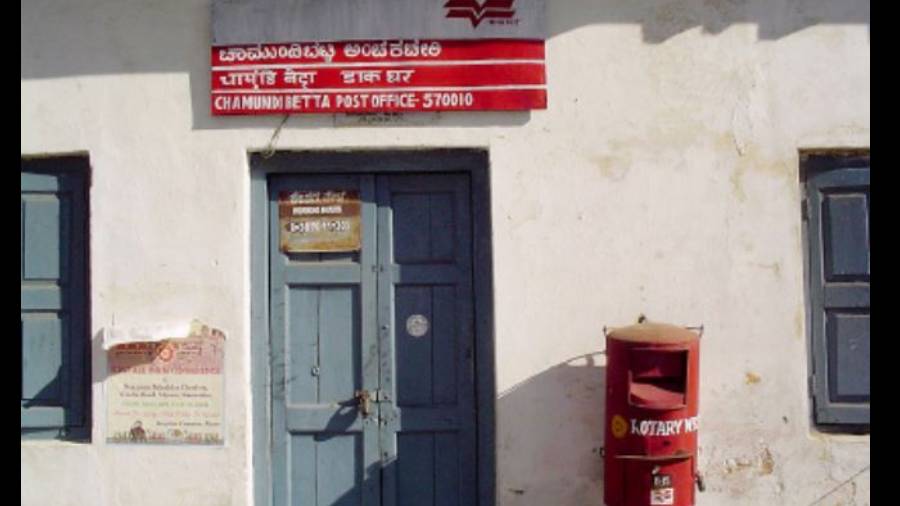Till recently, post offices in India had little more than 156,000 retail outlets. About 90% of them were in rural areas. The number remained mostly the same in the last four decades as expansion of the network in all these years was minuscule. Recently, the government decided to increase the number by 10,000 in the current financial year. This raised questions as to what made the authorities decide to set up new post offices when communication by post is dwindling and there is an increased emphasis on digital banking. In order to get an answer to this counter-intuitive initiative, we need to understand age-old norms for setting up post offices vis-à-vis the organisation’s new role.
A post office is set up in a rural area if three conditions are satisfied simultaneously: there should not be any other post office in a radius of three kilometres; the new post office should serve at least a population of 3,000 and a minimum anticipated revenue should cover at least one-third of the expected expenses. The norms are relaxed for hilly, tribal, desert and inaccessible areas. Based on these criteria, the rural postal network almost reached a point of saturation by the mid-1980s. However, new localities continued to develop, population increased in the existing villages and the demand for new post offices rose. An effort was made to satisfy these demands by relocating redundant urban post offices to rural areas. However, such relocation was difficult as local vested interests protested against any move to close down post offices.
The above norms had evolved at a time when postal communication was the most important means of communication. There was no provision to include revenue from banking and postal life insurance in the anticipated revenue. Since the 1990s, there was tremendous penetration of national small savings work and work relating to rural postal life insurance, whereas personal mail volume declined in the last two decades. Eventually, revenue from non-postal sources surpassed the postal revenue in India Post. The income criteria for opening a post office — that revenue of the new office should at least cover one third of anticipated expenses— turned out to be archaic. The recent initiative of the government is to be probed from this angle.
The decision to open 10,000 new post offices is based on the idea that a brick-and-mortar office for banking and financial services should be available in a five-kilometre radius in every village. This is an acknowledgement of the new role of the post office. Earlier, rural deposit mobilisation and life insurance rode piggyback on the establishment that was created for delivery of mail and parcels; now it is the other way round. Apart from rendering banking and insurance services nearer to the doorstep of rural people, the new post offices will also perform their traditional services.
The boost in expanding the postal network will lead to the creation of at least 20,000 posts of Gramin Dak Sevaks. This is important at a time when rural unemployment level is high. The post office has also hand-held first-generation users of technology. During the pandemic, Gramin Dak Sevaks working in rural post offices facilitated the withdrawal of funds for those having Aadhaar-linked accounts in commercial banks through the Aadhaar Enabled Payment Service of the post office. The expansion of the post office network will strengthen this new role.
Opening 10,000 new offices has a cost. The budgetary deficit of India Post will rise. The organisation must find ways to increase revenue to compensate for the rise in cost. The sub-post offices in big cities may even be closed down as there has been a substantial decline in footfall after the introduction of core banking. Till revenues rise, the government should bear the additional expenses. The social benefits of having 10,000 post offices in locations where villagers are required to travel more than five kilometres to transact basic banking and financial services outweigh the concerns fora marginal increase in deficit.
Gautam Bhattacharya is a former civil servant

